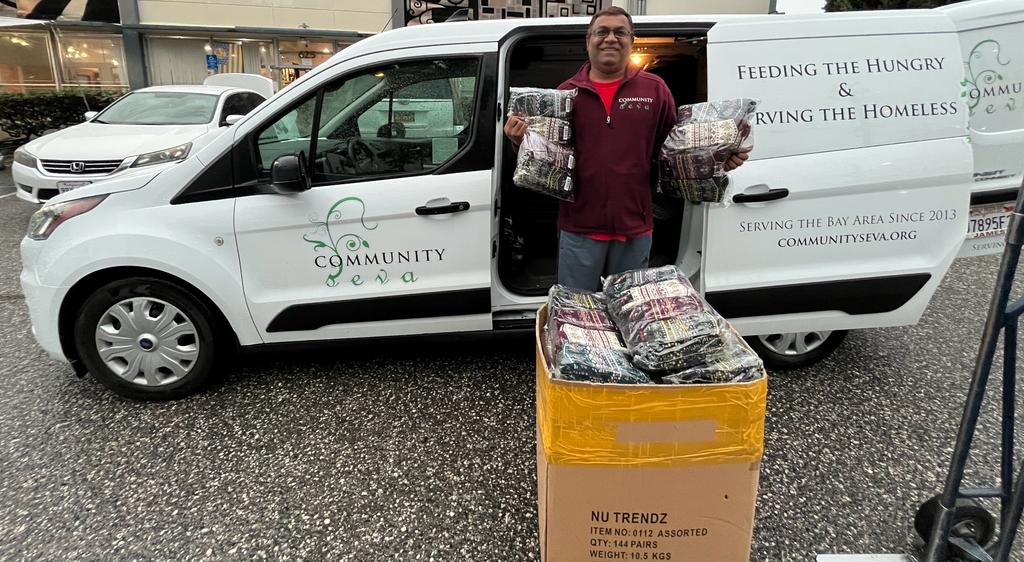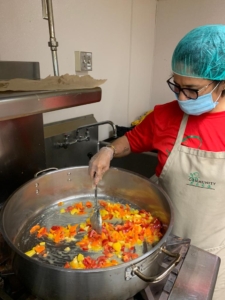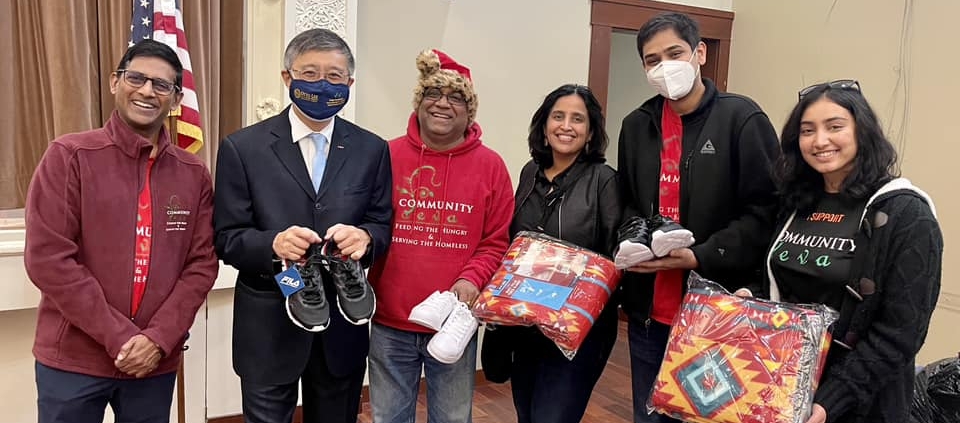Soles For the Unhoused
SAN JOSE, California — California has been battling unprecedented weather: a deluge of rain after five years of drought has created flooding, mudslides, trees and homes toppling over, and levees breaking.
Along with the rain are winds that have reached speeds of 70 miles per hour. During the worst part of the Biblical flooding, California’s Office of Emergency Services warned people to stay at home and not venture outdoors.
But for more than 170,000 homeless residents of California, staying indoors was not an option. The state is poised to become the world’s largest economy, with a $3.6 trillion gross revenue. Yet it also has the largest population of homeless people in the nation, a population that is growing exponentially as rents rise out of the reach of the working class.
The county of Santa Clara, where the Silicon Valley is based, has a homeless population of over 10,000 people, according to the 2022 Point-in-Time homeless census, a survey taken annually.
“People living on the street: I think about how they must be managing in this terrible weather,” Nathan Ganeshan, founder of the non-profit organization Community Seva, told New India Abroad. He noted that over 250 homeless people die on the streets of San Jose every winter.

Community Seva founder Nathan Ganeshan is shown distributing blankets and sleeping bags to homeless people.
“They are barefoot, or their shoes are torn. They have no socks. If we don’t protect feet, there is a good chance that people will die of hypothermia,” said Ganeshan, head of talent acquisition at the digital technology company Brillio.
“Homeless people walk a lot. They need shoes to allow them to do that,” said Ganeshan, noting that shoes also keep feet and bodies warm, and protect people from infections.
“Shoes that are falling apart. Shoes that are held together by duct tape. Shoes that are too small and cause the person to limp in pain. Shoes that have holes that let cold water seep in during rains. Shoes with cardboard in the soles.No shoes. These are the many challenges we have seen among the unhoused people that motivated us to launch the Shoe Seva,” wrote Ganeshan on the organization’s Facebook page.
This month, Community Seva bought 1,000 pairs of shoes — at a cost of around $27 a pair — in various sizes. His large team of volunteers went out to homeless encampments around the Silicon Valley, and the East Bay Area, which has a large un-housed population. Community Seva does not accept donations of shoes, said Ganeshan, noting that when people donate shoes, they have worn them to the point as to be non-wearable. Most of the shoes he purchased are athletic shoes, meant for walking long distances. However, he has also purchased some dress shoes for folks who are applying for jobs.
“No homeless person wants to remain homeless. They want to find jobs,” said Ganeshan. The organization also runs a mobile van to provide showers and laundry services to people without homes.
This year, Community Seva is also distributing 750 sleeping bags, which can withstand freezing weather: 32 degrees Fahrenheit (0 degrees Celsius). The Community Seva started out humbly: in 2009, Ganeshan happened to walk past a park with homeless folks. On an impulse, he bought pizza for one of the homeless people. In 2012, when he was laid off from his job, he would visit the park regularly on Sunday mornings to distribute pizza, water, bananas and cookies to the homeless who, by then, had started looking forward to his visits along with his sons.organization is also distributing 1,000 blankets. All are new, said Ganeshan, at a cost of $30 per sleeping bag, and $15 per blanket.

Community Seva youth volunteers fill backpacks with toothbrushes, toothpaste, socks, beanie hats, and other supplies necessary to live on the streets.
Community Seva started out humbly: in 2009, Ganeshan happened to walk past a park with homeless folks. On an impulse, he bought pizza for one of the homeless people. In 2012, when he was laid off from his job, he would visit the park regularly on Sunday mornings to distribute pizza, water, bananas and cookies to the homeless who, by then, had started looking forward to his visits along with his sons.

A volunteer cooks breakfast at the Community Seva kitchen. The organization has served up more than 250,000 meals to homeless people.
In 2013, Ganeshan was taking his son to a tennis tournament. The little boy asked: “Dad, what about homeless people? Who will feed them today?” In June that year, Ganeshan teamed up with a group of like-minded people to found Community Seva, which is celebrating its 10th anniversary this year.
The organization first started partnering with homeless shelters, cooking and serving meals on the weekends. In 2018, the organization had grown to more than 400 volunteers: it invested in a kitchen, where the team could cook up meals which would then be distributed too local shelters.
To date, Community Seva has served up more than a quarter of a million meals. Supporters can “sponsor” a meal: many do so on special family occasions. Community Seva also gets grants from local tech companies.
The Covid-19 pandemic — which threw more than 32 million people out of work in 2020 — proved a challenge for food pantries and other organizations attempting to feed low-income people and children, as traditional supply chains broke down. Small restaurants found themselves struggling with “shelter-in-place” orders, which greatly limited the number of customers.
The Community Seva team partnered with small restaurants, buying meals at greatly-reduced prices: the organizaton was able to safely deliver 1,600 meals per week.
“Everybody talks about homelessness during the election cycle, but then it drops off. And people protest affordable housing happening in their neighborhoods.”
“When you clean out a city of homeless people, you’re just pushing them somewhere else,” said Ganeshan, who has won numerous awards for his work, including the US Presidential Pin. “In an area as wealthy as ours, we have the capacity for permanent solutions.”



